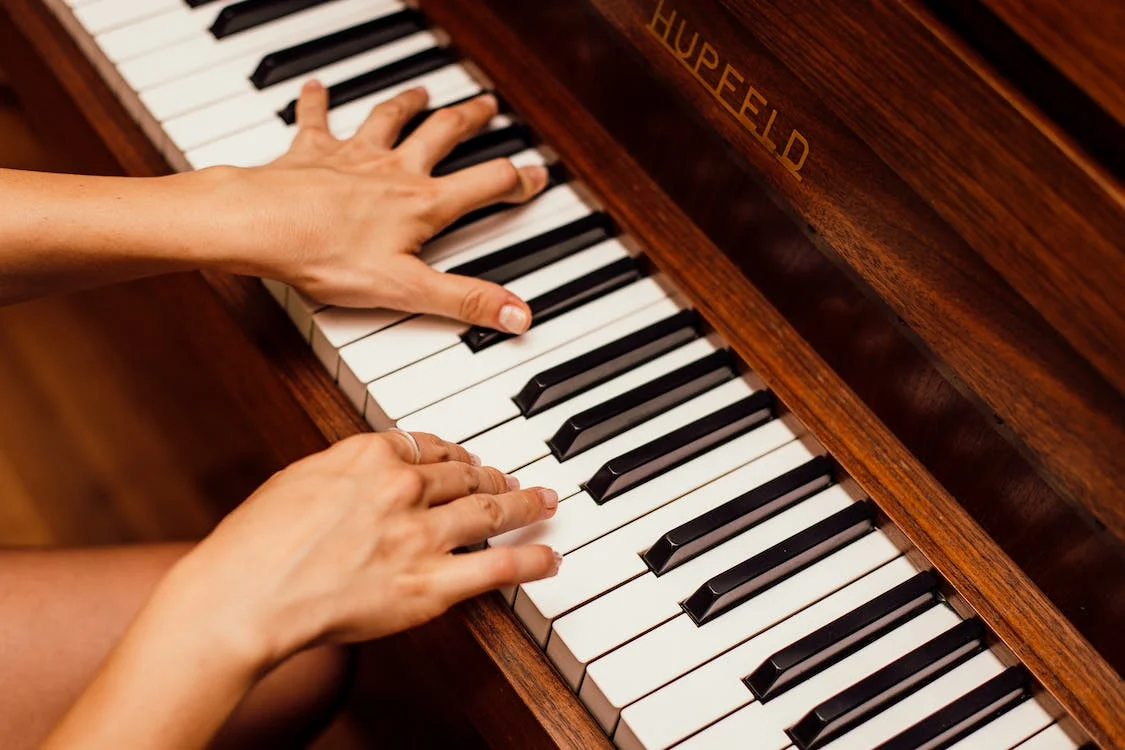A clavinet is an electronic version of the instrument clavichord. Since it is an electronic instrument, it requires a keyboard amplifier to produce a particular sound level.It was invented by a German musician named Ernest Zacharias in the 1950s and 1960s. Along with the other electromechanical instruments, the Clavinet was manufactured by the Hohner Musikinstrumente GmbH & Co. KGstarting in the year 1964 up to the early 1980s. Over the years, Hohner manufacturing had produced about seven models. These were: The Clavinet I, Clavinet II, Clavinet C, Clavinet L, Clavinet D6, Clavinet E7, and Pianet or Clavinet Duo. Prominently, these clavinet models, known for their distinctive staccato, are used in several genres of music, including reggae, rock, funk, soul songs, and jazz-funk.
- Clavinet I: Introduced in the year 1964, the bulky Clavinet I was introduced with a rectangular case profile. This Clavinet featured a bronze-gold hammerstone and sixty note keyboards under a folding lid.
- Clavinet II: Clavinet II has the same characteristics as the Clavinet I. However, this second version of the Clavinet does not have an internal speaker or amplifier grill on its left side.
- Clavinet C: In comparison with the Clavinet I and II, Clavinet C has a slimmer case than the first two models. The Clavinet C also has a removable black aluminum panel below its keys, which provides access to the tuning machine.
- Clavinet L: In 1968, the Clavinet L was introduced. It was a domestic model that featured a wood-veneer triangular body. Additionally, it has three wooden legs, an acrylic glass music stand, and reverse color keys.
- Clavinet D6: Introduced in 1971, the Clavinet D6 retained the case style of the Clavinet C. However, it is covered with a black vinyl leathercloth, while its surface is satin timbre vinyl.
- Clavinet E7: This clavinet model has a rectangular profile with rounded corners, as well as a removable lid in order to protect its keys and control surface. It also has a sliding control for volume and control panels located at the left-hand end of the instrument.
- Pianet or Clavinet Duo:Pianet/Clavinet Duo was manufactured by Hohner manufacturing from the years 1978 to 1982. This instrumentalso has a rectangular profile and rounded corners, much like the Clavinet E7. Its controls are located on the left side of the instrument. The control panel includes keyboard splits, mixtures of two instruments, and a standard clavinet mixture control.
Most of the Clavinet’s model has about sixty keys, with a keyboard range of F1 TO E6. The five-octave span of the Clavinet has amazingly covered the range of an electric guitar and electric bass guitar. The sound of the Clavinet is made by a series of sixty steel strings that are positioned diagonally below its key surface. Each of these keys pivots on a fulcrum at its rear. Also, it has a spring that returns the keys to their resting position. Beneath the Clavinet’s keys is a metal holder that grips a rubber pad. When the key is released, the string will vibrate. These strings are tuned by the machine that is positioned along the front of the harp steel strings. The harp mechanism of the Clavinet is totally different from other electronic piano instruments that the Hohner manufacturing had produced.
Most of the clavinets have two sets of pickups that are placed above and beneath the instrument’s strings. It also has pickup selector switches, as well as a guitar-level output that is connected to an amplifier. Initially, Hohner intended the Clavinet as an instrument used at home and in European classical music. However, as time goes by, the use of the Clavinet has been widespread and suitable for live amplified rock music and several other more genres.
In the 1970s, the Clavinet was used in genres like rock, jazz fusion, and funk music. When playing this instrument, the Clavinet was plugged into an electronic effect unit like the phaser sound processor. These electronic effects added to the unique sound of the Clavinet. In fact, most of the 2010s music draws on the sound of the 1970s era, often similar to the Clavinet’s effect.

